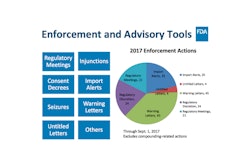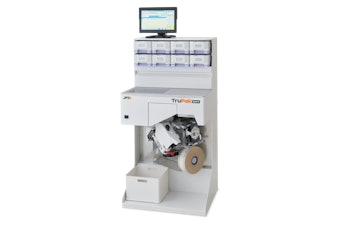In May, the European Parliament approved the final version of its Medical Device Regulation (MDR)—repealing the existing Medical Device Directive—with the goal of developing a regulatory framework that supports a high level of safety and innovation for medical devices.
In this Q&A, Kelli Anderson from Network Partners talks about the new MDR, including how up-classification will affect manufacturers and how the regulations are impacting notified bodies.
HCP: What do you think might be the biggest difference between the requirements of FDA’s device requirements and the EU’s MDR?
Kelli Anderson: The biggest difference is going to be how EU allows you to use a “similar,” or reference device, in your approval process. In the U.S., your predicate device can be a competitor’s device. Typically, the only information you will have on that device is going to be what you can gather on the Internet. In Europe, with the new MDR, utilization of a “similar” device in your application is going to require you to have access to technical design and performance specifications. This means that unless your competition is willing to share these details, your similar device is going to have to be a device already in your product portfolio. For large companies already in the market, this will not impact them. However it will make it very difficult, if not impossible, for start-up companies with novel technology to gain EU approval.
HCP: If companies don't meet the new requirements, they won’t be able to market their devices in the EU, even if they’ve been marketing their device and packaging for years?
KA: There is a transition period defined in Article 120 of the new MDR. CE certificates issued by a Notified Body prior to May 25, 2017 shall remain valid until expiration, which is five years. Certificates issued after May 25, 2017 and before implementation of the MDR, will remain valid until the certificate expiration date, or become void as of May 24, 2024.
There are exceptions to this, so it is important for organizations to review the regulations for impact on their particular device.
HCP: Some products that weren't previously classified as high-risk will now be considered as such?
KA: Classification (Class I, IIa, IIb, III) is kept essentially the same, but it is recommended to do a thorough assessment of all devices under the classification criteria in Annex VIII. I think the biggest difference is the addition of “and implants” to many of the Class III device requirements. Some implants under MDD and the new MDR fall under Class IIa and Class IIb. Devices under these classifications can be self-certified by the manufacturer once technical files and all other requirements have been met. If they are now regulated by some of the Class III requirements, a notified body will be involved in the approval process of this device. This will be a big shift in regulatory and business strategy for organizations.
HCP: Is it true that some details are still up in the air, as guidance documents haven't been published yet and revisions to ISO 11607 and ISO TC 198/WG7 are still underway?
KA: Right. At this point, it is going to be imperative that organizations engage with their notified bodies as a universal approach to the new regulations has yet to be established.
HCP: Any advice for medical device manufacturers?
Work with your notified body. Communication with them is going to be crucial to ensure compliance with transition timelines. The notified bodies are going to be swamped, and the likelihood of backlog is high. Frequent communication will ensure that organizations know when timelines are slipping and can adjust project plans accordingly.
Start your project planning and identify resource requirements now. Resource requirements are going to be needed across the entire organization: packaging, product development, labeling, sterilization, post market surveillance, clinical, regulatory, etc. Organizations that think this is just a “regulatory” issue are going to be scrambling at the end.
HCP: What are the next steps?
KA: Next steps are to work with your notified bodies and complete a cross-functional project plan. MEDDEV guidance documents will eventually come out, but the timing of those are up in the air right now.
HCP: What role does Network Partners plan on playing in this arena?
KA: Network Partners is poised to help our clients navigate through the MDR maze. We have experts in packaging engineering, labeling, regulatory affairs, clinical evaluation report writing, post market surveillance, quality systems, and project management.
Click here to read Part 2 of this Q&A>>>






















